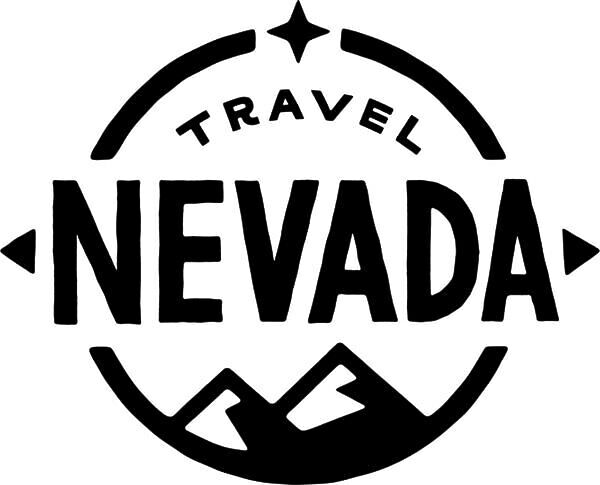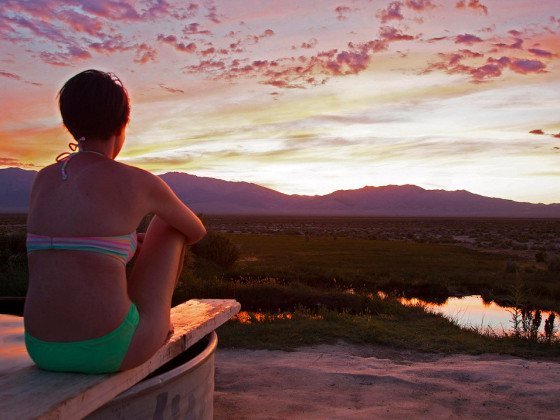1. Red Rock Canyon
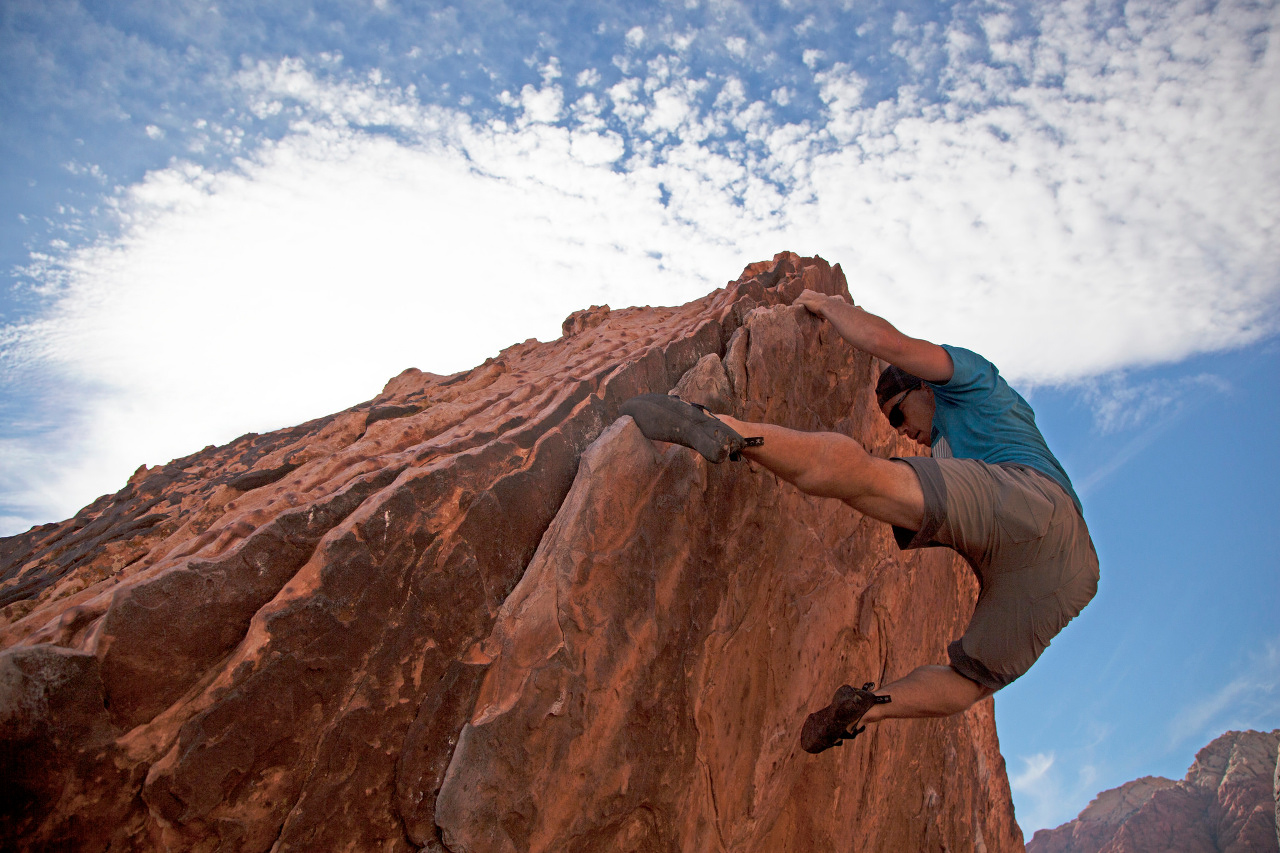
Photo courtesy of TravelNevada
The sandstone playground that is Red Rock Canyon National Conservation Area is located a ridiculously short 17 miles due west of downtown Las Vegas, and is actually visible from the Strip. A unique slice of the Mojave Desert, Red Rock features 3,000ft cliffs that provide incredible climbing routes, 30+ miles of hiking trails, road and mountain biking opportunities, a scenic loop drive, and camping options…all less than 30 minutes outside of Vegas.
2. Black Rock Desert
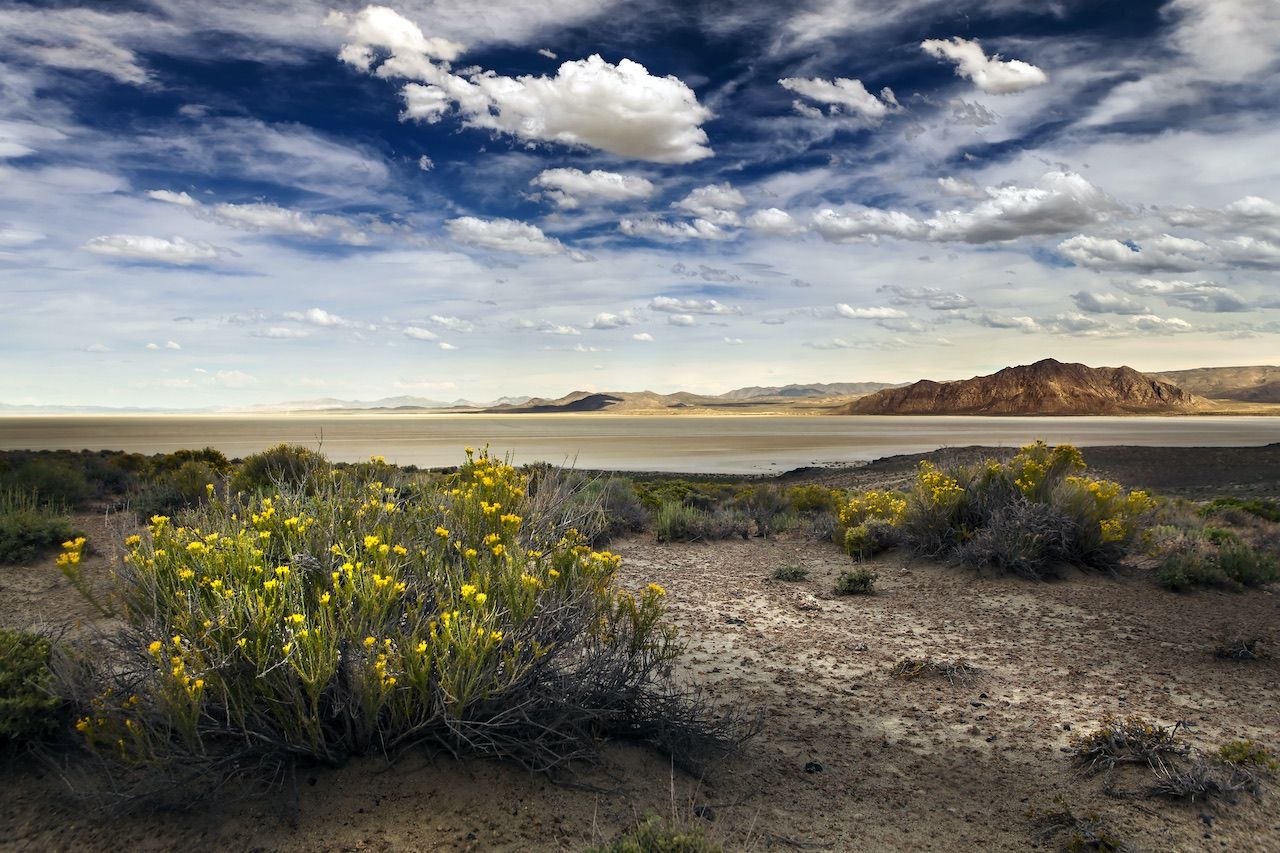
Photo: Shutterstock/Neil Lockhart
The awkwardly named Black Rock Desert-High Rock Canyon Emigrant Trails National Conservation Area actually encompasses 380,000 acres of mountains, canyons, hot springs, and wilderness trails, but it’s the vast alkali flats — or playa — that gets most of the attention, thanks to the inspiring ways in which we interact with it. This is where people come to launch homemade rockets, race landsailing craft, and, for one week each summer, construct and inhabit the creative-living community that is Burning Man.
3. Lake Tahoe
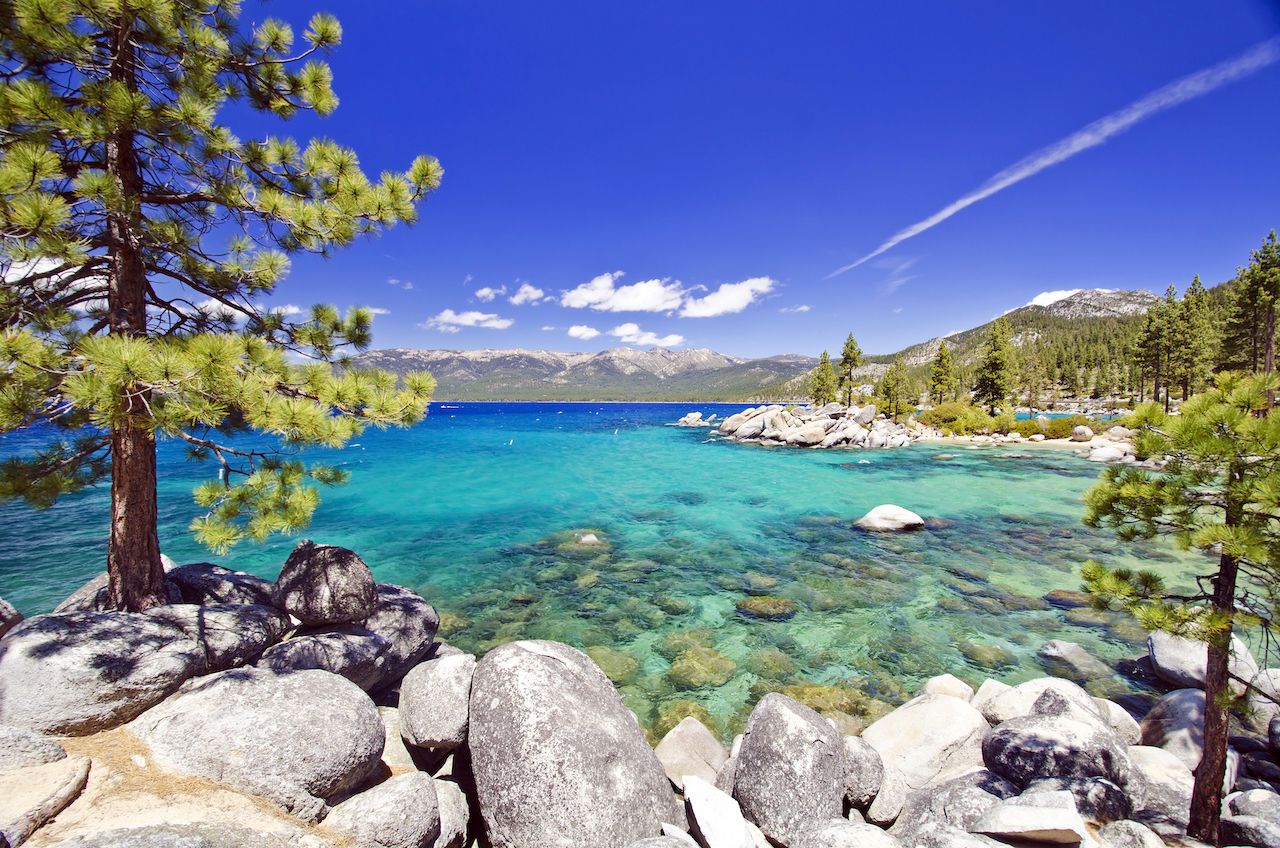
Photo: tusharkoley/Shutterstock
North America’s largest alpine lake stretches for 22 miles along the Nevada-California border and is actually the largest US lake by volume after the Great Lakes. It’s ringed by ski resorts, postcard mountain peaks, and both resort and local communities. Here are just a few places you should check out, in the order shown above: Bonsai Rock, Crystal Bay, and Sand Harbor.
4. Great Basin
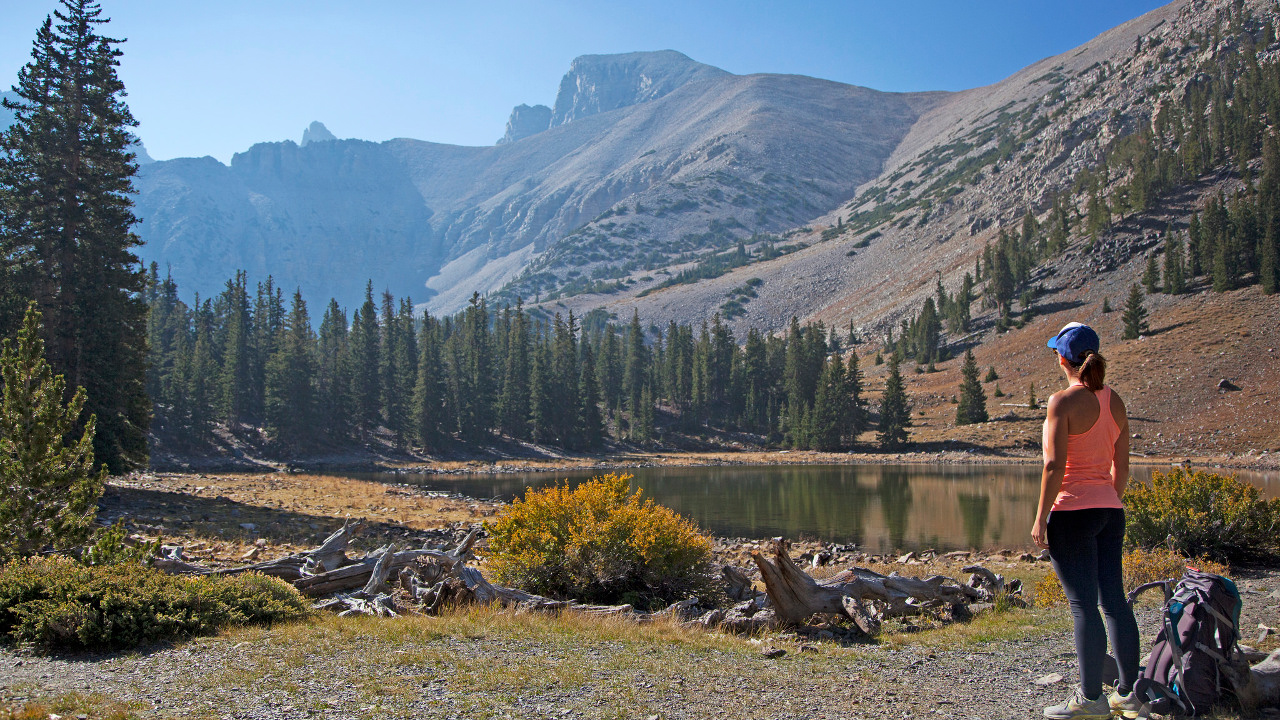
Photo courtesy of TravelNevada
The Great Basin is a massive geographic region of the American West that covers the majority of Nevada, as well as significant chunks of neighboring states. But for those traveling to Nevada, there’s one section in particular that should be of interest: Great Basin National Park, located on the state’s eastern border. The park protects the high peaks of the Snake Range and their alpine lakes and creeks (great for fishing), extensive underground passages of the Lehman Cave System, stands of ancient bristlecone pine (oldest known organisms on the planet), and some of the best stargazing skies in the nation. The gateway towns of Baker and Ely give you access to this spectacular place.
5. Little Finland
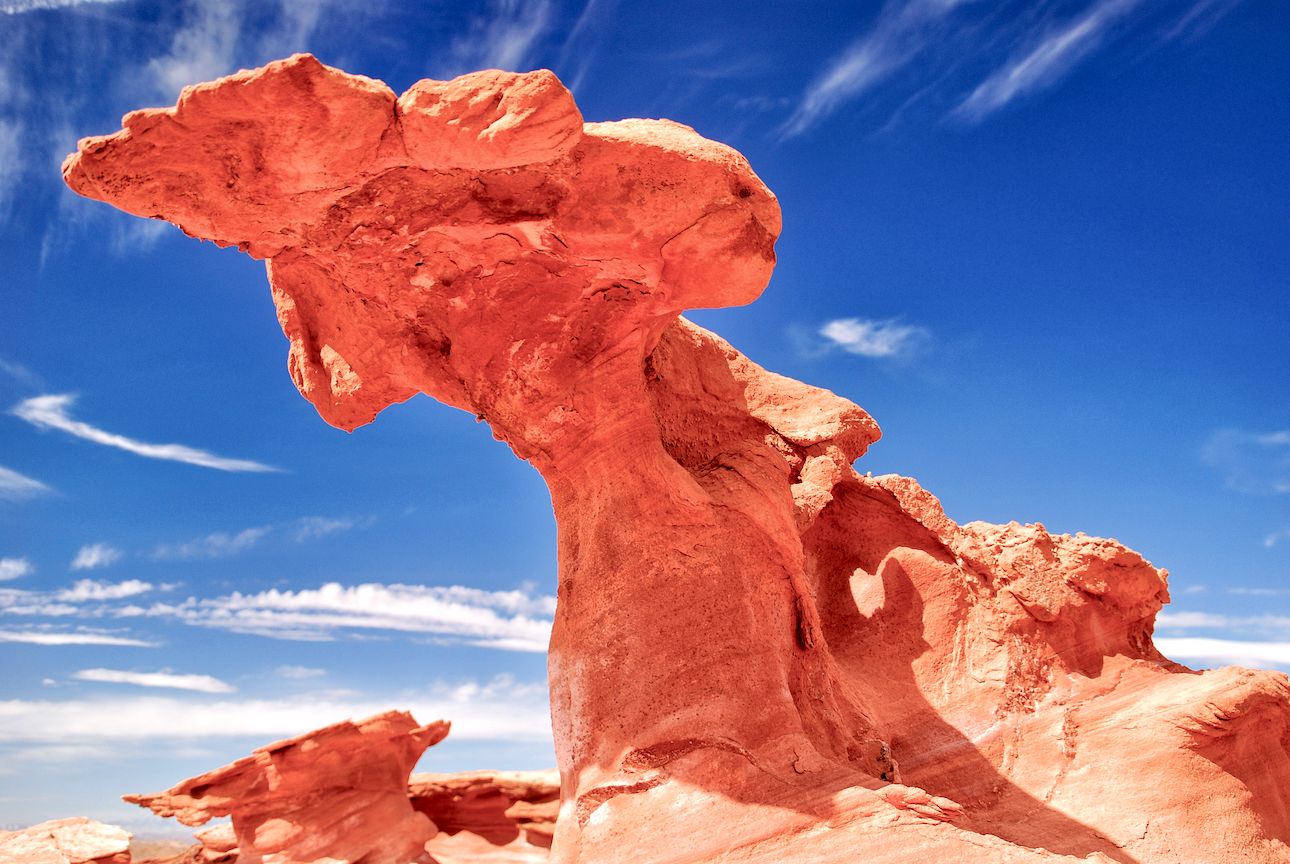
Photo: Shutterstock/wolfso
The oddities and diversity of sandstone geology are on full display in the remote pocket of southeastern Nevada that sits between the northern arm of Lake Mead and the Utah border. One such area is known as Little Finland (named for a rock feature called a “fin,” not the Nordic country), a natural sculpture gallery showcasing the versatility of the red Navajo sandstone. Find it south of Mesquite via the BLM’s Gold Butte Backcountry Byway, near the ghost town of Gold Butte.
6. Central Nevada ranges and valleys
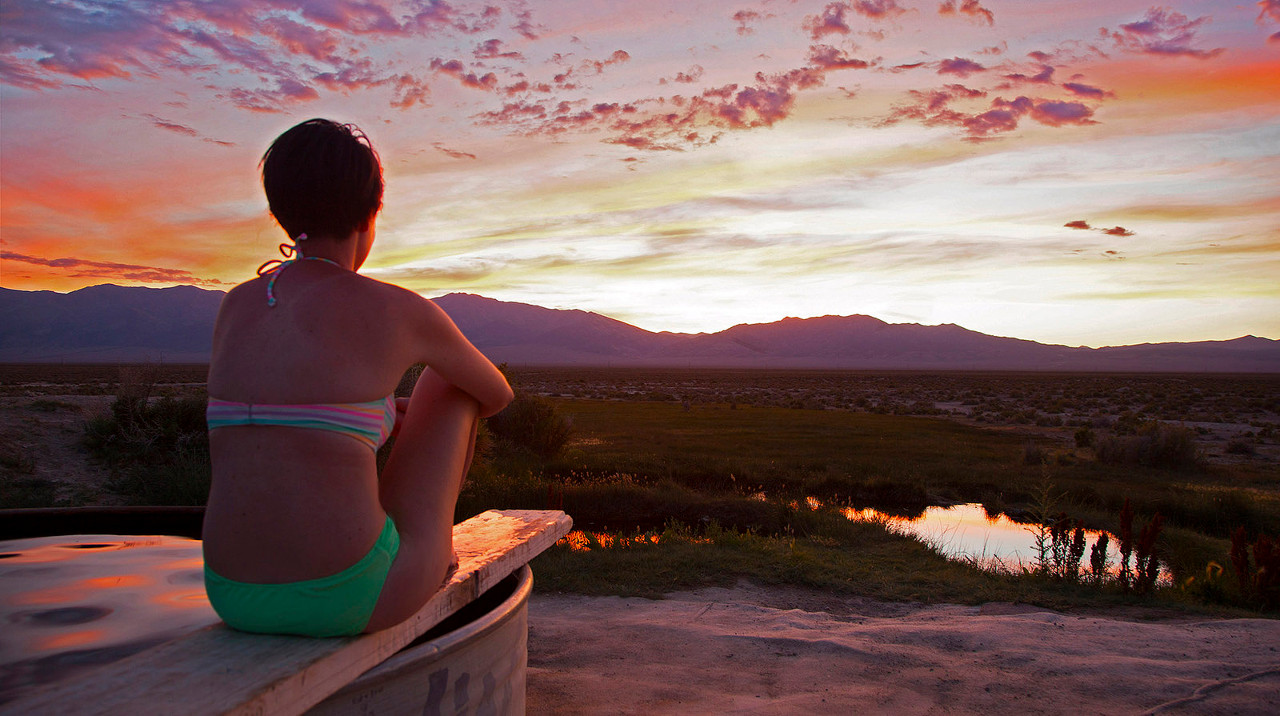
Photo courtesy of TravelNevada
If you pull up a terrain map of Nevada, you’ll see the state is dominated by 150+ distinct mountain ranges separated by low desert valleys and the remnants of ancient inland seas. For the best thumbnail of this geographic phenomenon, look to the state’s central region where the Toiyabe, Toquima, and Monitor Ranges rise. The subsequent diversity of landscapes — and associated adventure opportunities — is staggering. Within a matter of miles you can go from the high peaks of the Alta Toquima Wilderness, to the desert flats of the Smith Creek Playa (site of the 2014 Landsailing World Championship), to geologic features such as Spencer Hot Springs. Find it all in the backyard of the cool little town of Austin.
7. Pyramid Lake
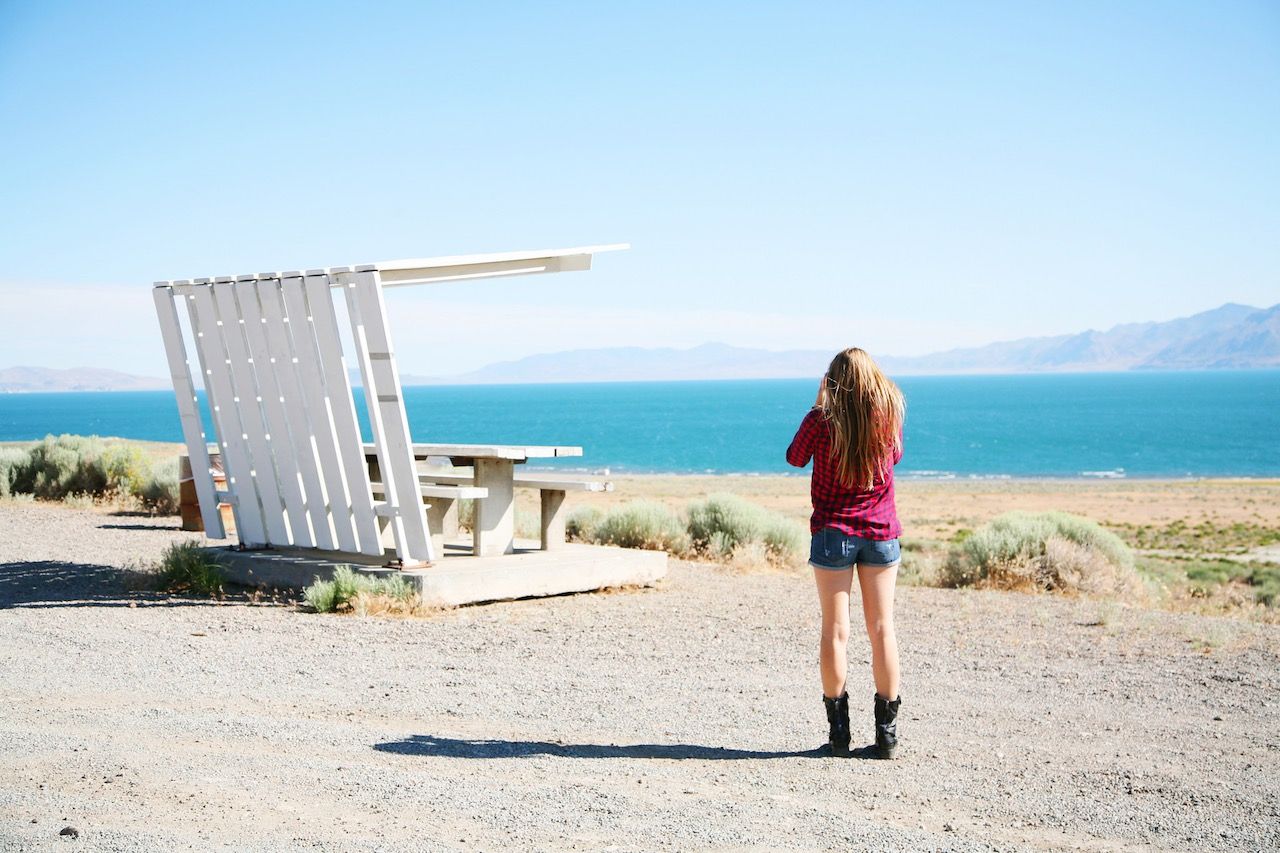
Photo: Kaitlin Godbey/TravelNevada
From Lake Tahoe, the Truckee River flows through downtown Reno and then, after tracing I-80 east for a ways, cuts north to empty into Pyramid Lake. The most sizable remnant of the ancient Lake Lahontan, Pyramid Lake is today most important for its role in helping to preserve different subspecies of cutthroat trout, including the Lahontan. This attribute puts the lake on the map for some of the best trout fishing anywhere — the world record cutthroat was caught here.
8. Spring Mountain Ranch

Photo courtesy of TravelNevada
In 1876, Spring Mountain Ranch (then called Sandstone Ranch) was established in Cottonwood Valley, an oasis created by a spring-fed creek 15 miles west of Las Vegas. Today, you can visit the historic site as part of Spring Mountain Ranch State Park, which itself is contained within Red Rock Canyon National Conservation Area. Hike, explore the ranch’s connection to the Golden Age of Hollywood, and attend a summer theater performance — again, all just a quick drive from the Strip.
9. Valley of Fire
Travel out of Vegas in the other direction for about an hour and you’ll find Valley of Fire State Park, adjacent to the northern reaches of Lake Mead. Multicolored swirls of rock, fiery red cliffs, and arches and other spectacular eroded features mark this state park with hiking, camping, and picnic facilities. Temperatures get can pretty steamy in summer, but a visit to Valley of Fire in the cooler months is one excellent reason to hit Las Vegas in winter.
10. Lake Mead
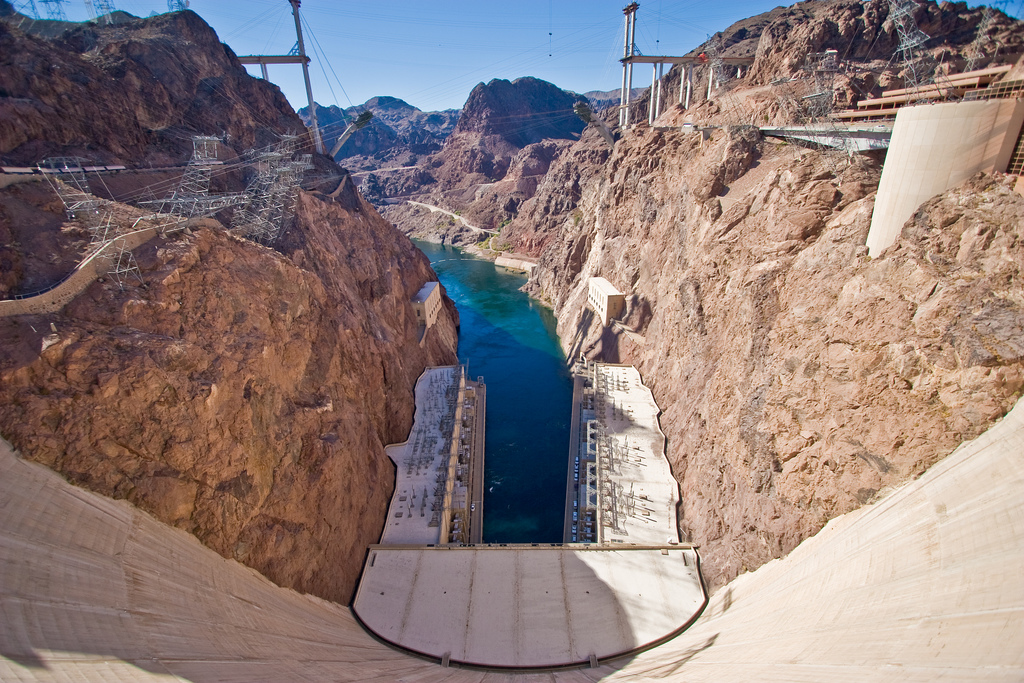
Photo courtesy of TravelNevada
In 1936, the completion of the Hoover Dam in the Black Canyon of the Colorado River created Lake Mead, the largest-capacity reservoir in the US. Today it’s the centerpiece of Lake Mead National Recreation Area, which includes the smaller Lake Mohave to the south and features miles of scenic desert hiking and camping in addition to pretty much whatever type of water recreation you’re looking for. The Hoover Dam is a destination in itself, just a couple minutes east of Boulder City (and 40 minutes outside of Vegas) on US-93.
11. Cathedral Gorge
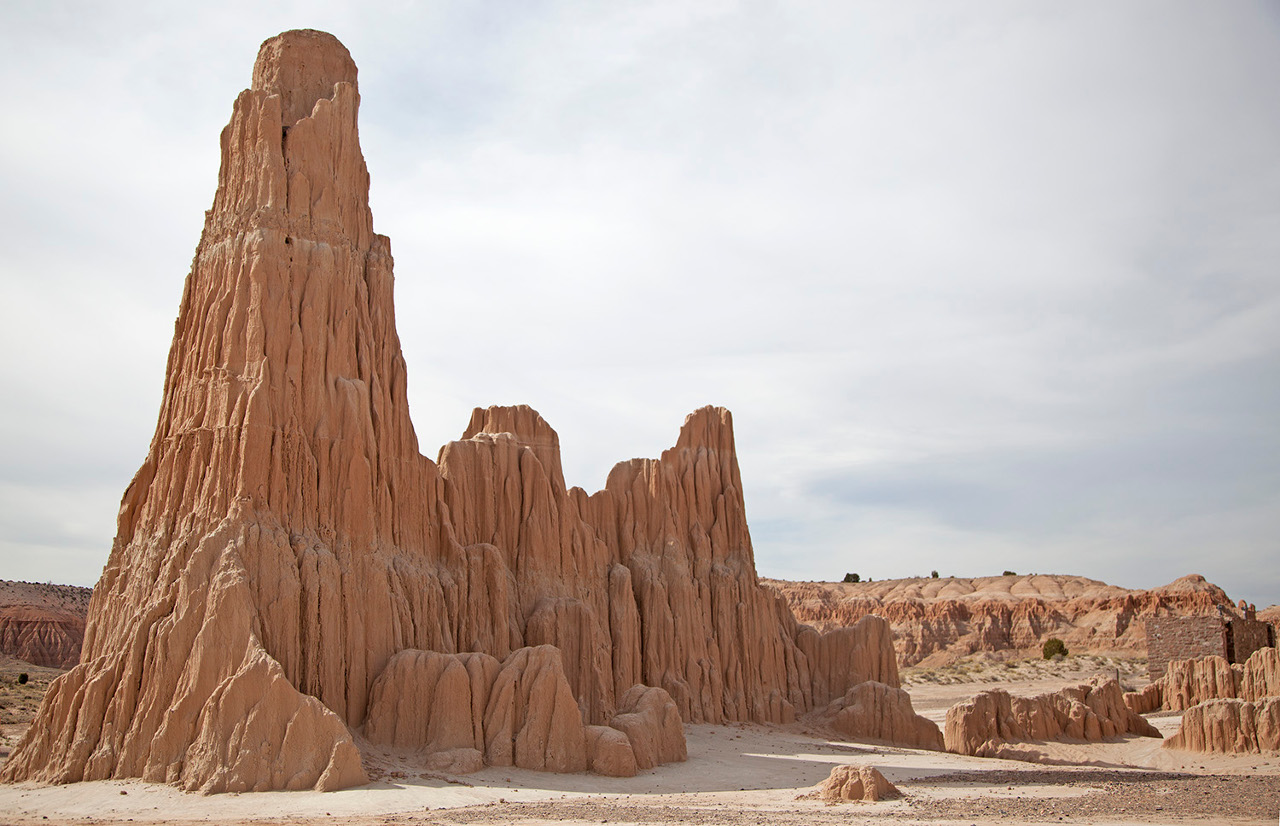
Photo courtesy of TravelNevada
Leave the state’s signature sandstone behind and check out a different type of geological formation in Cathedral Gorge State Park, in central-eastern Nevada between the towns of Panaca and Pioche on US-93. Here, deposits of soft clay that once formed a freshwater lakebed have eroded into countless spires, columns, and gullies. Camp overnight at the 22-site campground, and hike up to the Miller Point overlook for a panorama of this unique Nevada landscape.
12. Ruby Mountains

Photo: Chris Moran/TravelNevada
One of the state’s most prominent high desert ranges, the Rubies stretch for 80 miles near the northeastern corner of the state, immediately south of I-80 and the towns of Elko and Wells. In winter, 100+ inches of average snowfall make for some truly excellent backcountry skiing — check out Terminal Cancer, a 1,800ft couloir that stays between 12 and 20 feet wide for its entire length. If you’re traveling without a snowmobile, best turn to the guides at Ruby Mountains Heli-Experience to get you where you want to go. In summer, there’s paved-road access to trailheads via the Lamoille Canyon Scenic Byway (FR-660 out of Lamoille).
13. Las Vegas
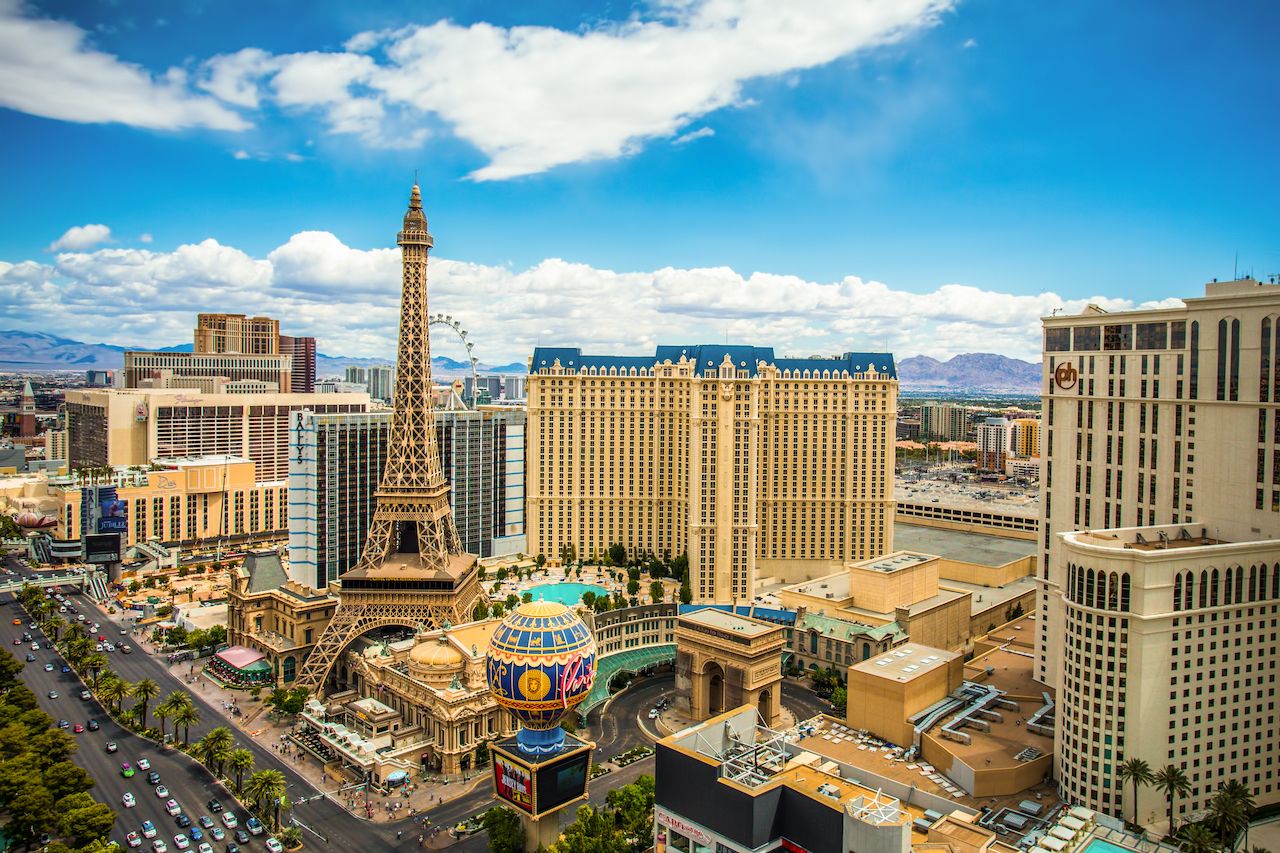
Photo: littlenySTOCK/Shutterstock
Regardless of what you think of the Vegas Strip in comparison to the other entries on this list, you can’t argue this: It is one epic landscape, and one that defines the modern state of Nevada. The natural and the artificial, the awesomely remote and the exorbitantly hedonistic, side by side in the Silver State.
